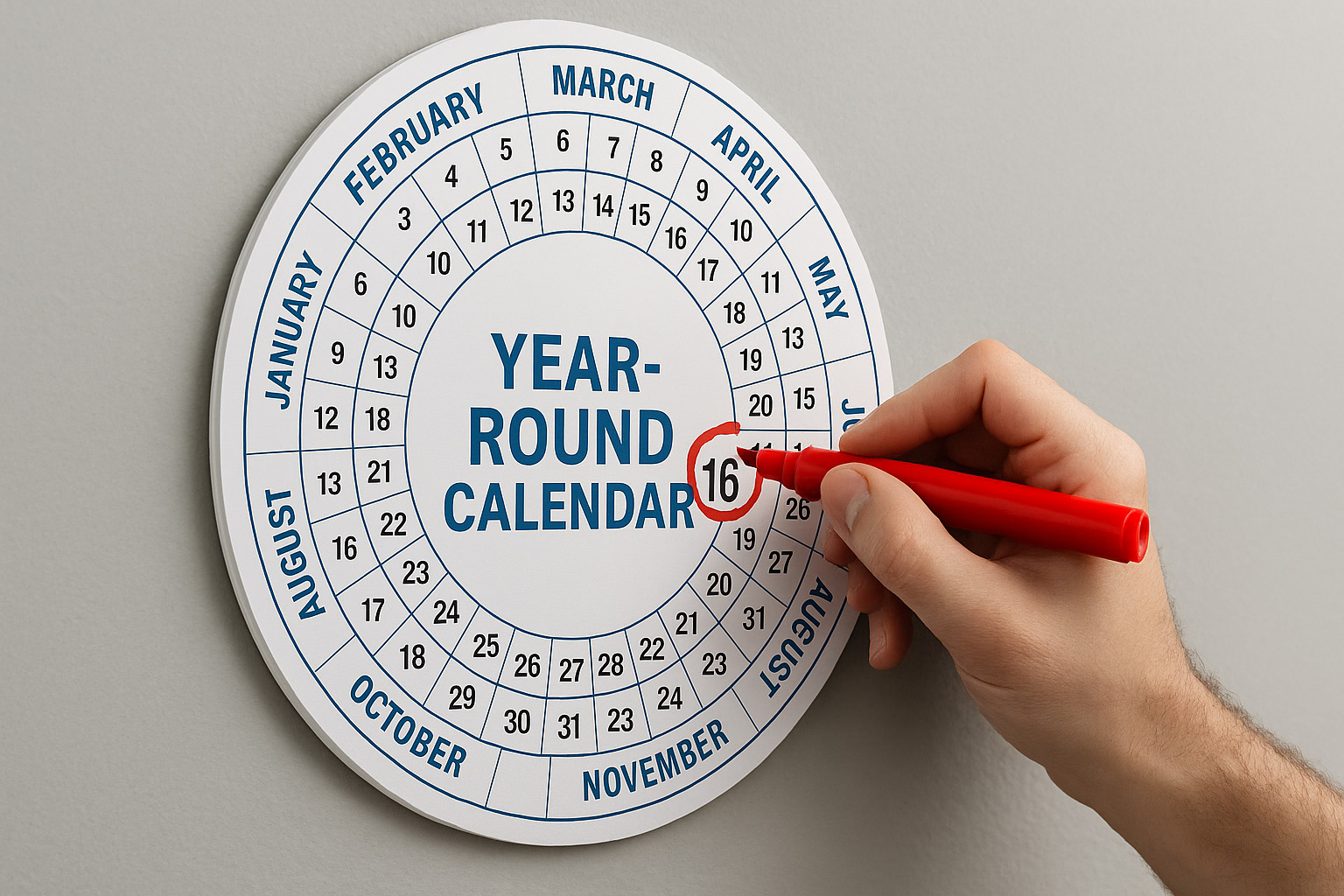Most schools market reactively. Enrollment season approaches, and suddenly there is a rush to post on social media, print flyers, or schedule an open house. The problem with this approach is that it creates gaps in visibility. Families might only hear about your school during a few months of the year — and that is not enough in today’s competitive landscape.
A year-round marketing calendar ensures that your school stays top of mind for prospective families, community partners, and even your own enrolled families. It provides structure, consistency, and clarity. More importantly, it allows you to plan with purpose instead of scrambling at the last minute.
Marketing is a Year-Round Conversation, Not a Seasonal Push
Parents do not all start searching for schools in January or February. Some begin in the fall. Others move in the spring or consider a switch during the summer. If you are only marketing during one window, you are missing many opportunities.
Year-round marketing ensures that whenever a parent is ready to explore, your school is there. That means:
- Ongoing visibility through social media, email, and community events
- Frequent reminders of your school’s value and unique programs
- Consistent storytelling that builds trust over time
This does not mean flooding your channels with content every day. It means showing up with intention, using a schedule that aligns with your enrollment goals and parent behavior.
Plan Around the School Year and Parent Mindsets
A good marketing calendar mirrors the rhythm of the academic year and the emotions that parents are experiencing at each stage. The message you share in August should not be the same one you share in January.
Here is a simplified example of what that could look like:
- August to October: Showcase back-to-school energy, classroom culture, teacher introductions, and student success stories. Parents are hopeful and engaged.
- November to January: Focus on open house invitations, parent testimonials, and application deadlines. Families begin comparing school options.
- February to April: Highlight financial aid options, curriculum details, and re-enrollment deadlines. This is when many families finalize their choices.
- May to July: Share summer program info, graduation highlights, and planning tips for the fall. New families want reassurance, while others may consider late transfers.
Planning this in advance allows your team to work ahead. Instead of rushing to post about an event the day before, you can prepare content that aligns with the emotions and decisions of your audience.
Repurpose Content Across Channels for Greater Impact
Creating a year-round calendar does not mean creating new content constantly. In fact, one of the best strategies is to repurpose strong pieces of content across multiple formats and platforms.
For example:
- A parent testimonial video can become a quote graphic, a blog post, and part of a tour follow-up email.
- A highlight from a school event can be shared as a photo album, a short reel, and a newsletter blurb.
- A blog post about preparing for kindergarten can be turned into a lead magnet PDF and an Instagram carousel.
Batching and repurposing content makes your efforts more efficient and your message more consistent. It also helps schools with small teams stay visible without burning out.
Build Flexibility Into Your Calendar
While consistency is important, your calendar should not be rigid. Schools are dynamic environments. Things change, and your marketing plan should leave room for surprises.
Here is how to build in flexibility:
- Leave space each month for “just in time” content like events, student achievements, or local news
- Use a simple tracking system to log what worked well and what did not
- Review your plan quarterly to adjust based on enrollment trends or school priorities
If your team uses a project management tool like ClickUp or Trello, set up a shared content calendar that maps out themes, deadlines, and responsibilities. This keeps everyone aligned and accountable.
The goal is not perfection. It is progress. Even a simple monthly rhythm can create a massive improvement over last-minute efforts.
Consistency Builds Trust
When families see your school show up regularly — not just during admissions season — it builds trust. It signals that your school is professional, organized, and invested in communication.
A year-round marketing calendar helps you stay consistent without the stress. It brings alignment between your enrollment goals, your messaging, and your parent audience. Most of all, it creates space for creativity and connection.
Marketing should never feel like a scramble. With the right calendar in place, it becomes a natural extension of your school’s mission and story.


